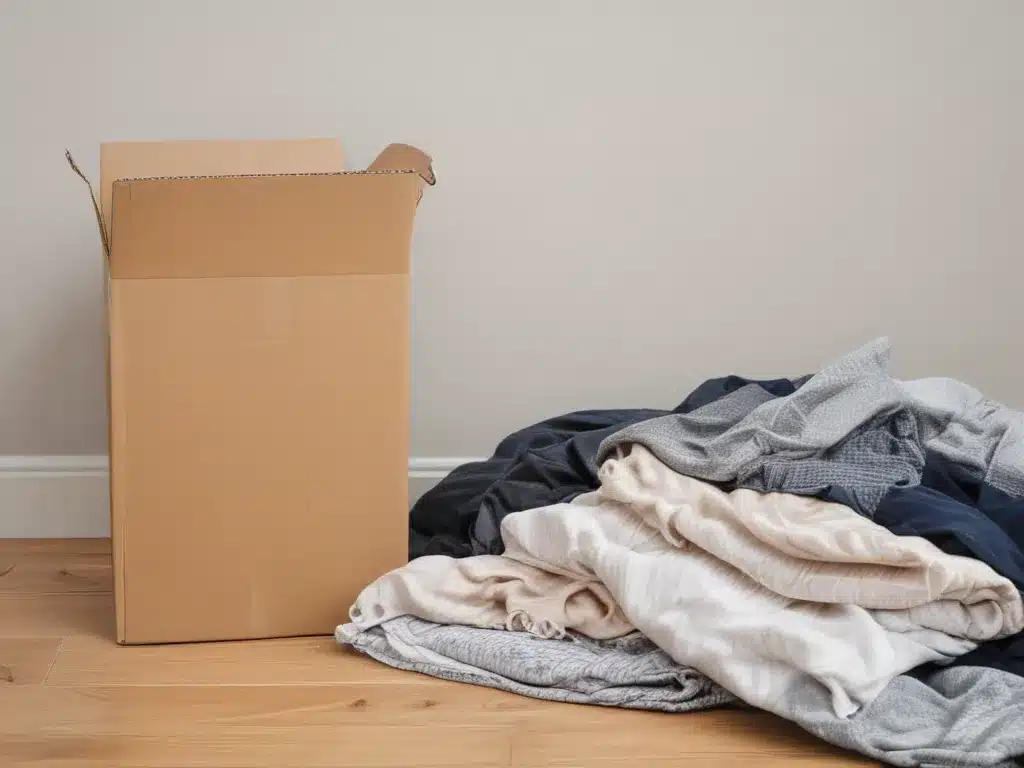Introduction
Clutter can take over our homes before we even realize it. The accumulation of possessions – the clothes we’ve outgrown, the gadgets we’ve replaced, the books we’ve read – can quickly overwhelm our living spaces. This excess of belongings can create feelings of stress, anxiety, and overwhelm. However, the process of decluttering your home doesn’t have to be a daunting task. By breaking it down into simple steps and developing sustainable habits, you can create a calm and organized living environment that promotes peace of mind.
Identify the Clutter Hotspots
The first step in decluttering your home is to identify the areas that tend to accumulate the most clutter. Common hotspots include:
- Closets: Over time, our closets can become repositories for clothes, shoes, and accessories we no longer wear or need.
- Drawers and cabinets: These storage spaces often become catch-alls for miscellaneous items we struggle to find a permanent home for.
- Home office or workspace: Papers, files, and office supplies can quickly accumulate and create a disorganized environment.
- Kitchen countertops: Appliances, utensils, and other kitchen items can clutter these surfaces, making it challenging to prepare meals and maintain a clean cooking area.
Once you’ve identified the clutter hotspots in your home, you can begin the decluttering process by tackling one area at a time.
Implement the Four-Box Method
The four-box method is a simple yet effective way to sort through your belongings and make decisions about what to keep, donate, or discard. Here’s how it works:
- Keep Box: This box is for items you use regularly and want to keep in your home.
- Donate Box: Anything in good condition that you no longer need or want can go in this box to be donated to charity or given away.
- Sell Box: If you have items of value that you no longer need, you can put them in this box to sell online or at a garage sale.
- Trash Box: Anything that is broken, damaged, or unusable should go in the trash box for disposal.
As you sort through your belongings, be honest with yourself about what you truly need and what you can let go of. Remember, the goal is to create a clutter-free living space that brings you joy and peace of mind.
Adopt the One-In, One-Out Rule
To prevent clutter from accumulating in the future, consider adopting the “one-in, one-out” rule. Essentially, every time you bring a new item into your home, you commit to getting rid of something you already own. This simple practice can help you maintain a decluttered and organized living space over time.
Embrace Minimalism
Minimalism is more than just a design trend – it’s a lifestyle choice that can help you declutter your home and simplify your life. By embracing minimalism, you can focus on keeping only the things that are truly necessary and bring you joy or serve a practical purpose.
Here are some tips for embracing minimalism in your home:
- Invest in quality over quantity: Instead of accumulating cheap, disposable items, invest in high-quality, multi-purpose pieces that will last.
- Declutter regularly: Set aside time each month or season to go through your belongings and get rid of anything you no longer need or use.
- Limit decor and knick-knacks: While decorative items can add personality to your home, too many can create a cluttered and chaotic environment.
- Digitize where possible: Opt for digital versions of books, music, and movies to reduce physical clutter.
By adopting a minimalist mindset, you can create a calming and serene living environment that promotes focus, productivity, and inner peace.
Tackle Sentimental Clutter
Sentimental clutter can be one of the most challenging types of clutter to deal with. We often hold onto items because of the memories or emotional attachments they represent, even if we no longer have a practical use for them.
Here are some tips for tackling sentimental clutter:
- Take photos: If you’re struggling to let go of certain items, consider taking photos of them to preserve the memories without keeping the physical object.
- Create a memory box: Designate a small box or container for your most cherished sentimental items, limiting yourself to what will fit inside.
- Digitize memorabilia: Scan and digitize old photos, letters, and other memorabilia to declutter while preserving the memories.
- Ask yourself tough questions: When considering a sentimental item, ask yourself if keeping it is truly serving you or if it’s causing more clutter and stress.
By approaching sentimental clutter with mindfulness and being selective about what you keep, you can declutter without sacrificing the memories and emotional connections that matter most.
Conclusion
Decluttering your home is not only about creating physical order but also cultivating a sense of mental clarity and peace. By following these simple steps and developing sustainable habits, you can transform your living space into a sanctuary that promotes calm, productivity, and overall well-being.
Remember, decluttering is an ongoing process, and it’s essential to be patient and kind to yourself along the way. Celebrate small victories, and don’t be afraid to seek help or support from professional organizers or decluttering services like Adam Cleaning if you need additional assistance.
With dedication and perseverance, you can bid farewell to clutter and embrace a simpler, more organized, and more fulfilling life at home.







